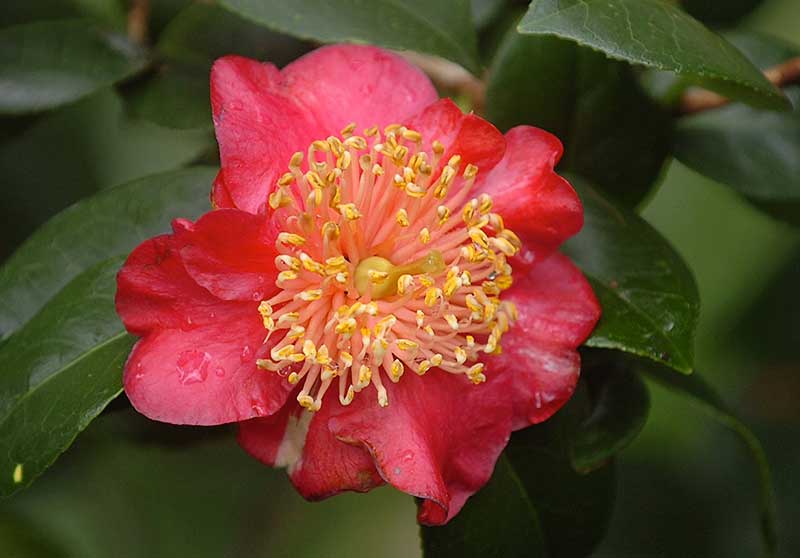Camellias are Trees for Bees
This article was first published on 09 Oct 2015.

Camellia japonica ‘Hinomaru’
September was Bee Aware Month, reminding us of the vital role bees play in providing food and important resources for life on our planet. If you are selecting plants for your garden and providing food for bees is a factor in your choice, then camellias are a great option.
Bees consume pollen for the proteins and vitamins. But, not all pollen is created equally and research has confirmed that camellias have high quality, protein-rich pollen.
Camellias’ timing is also relevant. They flower during important seasons in the life cycle of bees, when there are few other plant species in flower. Camellias are particularly valuable over autumn, when bees are storing pollen for winter use and also during early spring when bees are building up their populations.
Not all camellias will be the factory of pollen production you are looking for, so you need to consider a few details. Many cultivated camellias, such as the formal doubles which have no stamens, can’t offer pollen so are of little use to bees. Choose camellia flowers with large clusters of stamens and masses of pollen.
Floriferous camellias have the advantage of providing bulk pollen. Put yourself in the bees’ position and select flowers with strong colour contrasts, bright yellow pollen and a flower form which has easy access.
- New Zealand is home to about 40 native and introduced species of bees
- The best time to purchase camellias is when they are in flower, so you know exactly what you are getting
Marianne Groothuis is the camellia and theme plant collection curator at the Dunedin Botanic Garden


